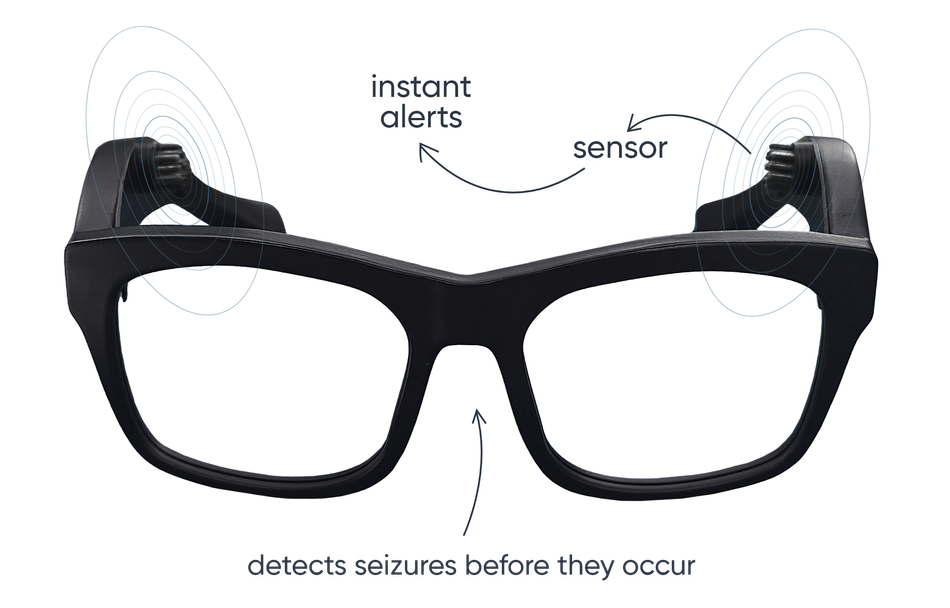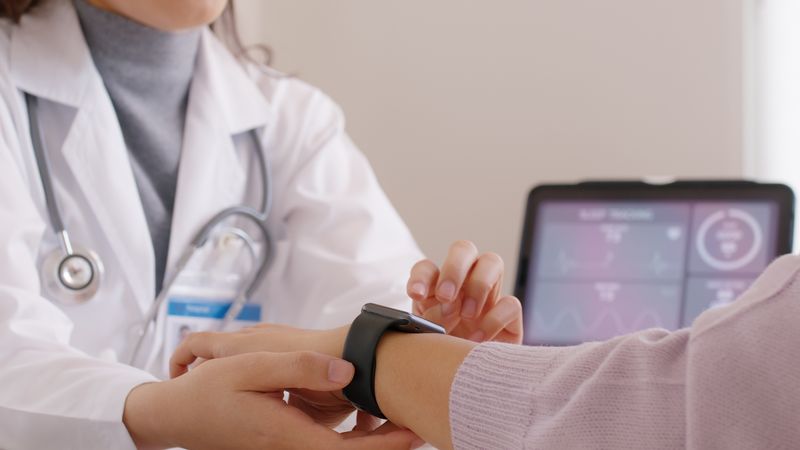AI Anomaly Detection for Seizure Prediction: How BrainChip enables Onsor Technologies NEXA
BrainChip's Akida processor is enabling real-time seizure prediction in wearable devices, marking a breakthrough in low-power, personalized medical AI at the edge.
Seizures often strike without warning, leaving patients and caregivers with no time to respond. This unpredictability has limited independence, increased risk, and kept treatment reactive rather than preventive. Advances in real-time health monitoring and predictive AI are changing that. With edge computing and neuromorphic processors capable of continuous, on-device analysis, real-time seizure prediction is becoming a practical tool in everyday healthcare. These systems support earlier intervention, enable more accurate decision-making, and allow care to be tailored to the individual beyond clinical settings.
The Unpredictability of Epileptic Seizures
Epilepsy affects more than 50 million people globally [1]. Its hallmark symptom of sudden, unprovoked seizures can lead to falls, injuries, and daily uncertainty. Many patients live with restrictions on driving, working, and independence due to the unpredictability of episodes.
Roughly 30% of cases are drug-resistant [2]. For these patients, early warnings could significantly reduce harm, improve autonomy, and enable timely intervention. Yet, today’s tools are reactive. Most seizure-detection systems trigger only after a seizure starts. Hospital EEG monitors provide detailed data but are bulky and impractical for daily life. Furthermore, wearable solutions that depend on cloud-based AI introduce latency, consume too much power, and raise privacy concerns.
One technology that is emerging as a new frontier in wearables and medtech is anomaly detection. With projected market growth into the tens of billions within the next decade, its applications in healthcare and wearables are increasingly relevant, particularly medical use cases like non-invasive seizure monitoring and control [3].
Why Most Seizure Solutions Don’t Work
Despite growing interest in AI-assisted seizure monitoring, most current solutions fall short of delivering real-time prediction reliably and often can only detect when a seizure is actually happening. This means that these devices can only signal for intervention, not prevention, which limits their usefulness to improve the quality of the population susceptible to seizures. Technical limitations in delivering real-time prediction in a practical, wearable format include power consumption, personalization, and system responsiveness which have prevented broader adoption of predictive techniques.
Accurate seizure prediction requires continuous processing of high-resolution EEG signals, which places significant demands on computational resources. Traditional AI hardware, such as CPUs and GPUs, are not designed for this kind of sustained, edge-based inference. Their high power consumption quickly drains the batteries of small wearable devices, making them impractical for all-day use.
To address this, many wearables simplify or downscale their models to reduce energy demands, but this often comes at the cost of predictive accuracy. Others rely on wired power sources or external modules, which limits mobility and everyday usability. As a result, developing a truly portable, battery-efficient device capable of real-time seizure prediction has remained a significant challenge.
Challenge 2: Reliability and Personalization
False positives remain a critical barrier to adoption in seizure prediction systems. Frequent incorrect alerts frustrate users, increase anxiety, and contribute to caregiver fatigue. Just as problematic is the variability in seizure patterns between individuals; what signals an oncoming episode for one patient may be entirely different for another.
Most AI models are trained on generalized datasets and lack the ability to adapt to these differences, leading to missed detections or unreliable warnings. Without mechanisms for continuous learning and personalization, these models struggle to build long-term trust and deliver clinically meaningful support.
The Missing Piece: Neuromorphic AI
Neuromorphic processors mimic the human brain, processing information through event-driven neural activity rather than continuous data streams. Instead of analyzing every signal in real time, they respond only to significant changes (or spikes), just as biological neurons do. This event-based approach dramatically reduces energy consumption while supporting fast, efficient processing.
For anomaly detection—and seizure prediction, in particular—the use of neuromorphic AI means real-time inference with near-zero latency, without relying on external computation. These processors are optimized for continuous, always-on biometric monitoring in wearable devices, operating entirely on-device with minimal power draw, which is an essential step toward practical, personalized care [4].
BrainChip’s Akida: A Neuromorphic AI Engine Built for the Edge
Turning the concept of neuromorphic AI into a commercially viable processor requires an architecture optimized for performance, efficiency, and adaptability in real-world conditions. BrainChip’s Akida processor delivers on that, providing the core intelligence behind next-generation medical wearables for seizure prediction.
Architecture Designed for On-Device Intelligence
Akida is a neuromorphic processor built around spiking neural networks (SNNs) that process information using event-based activity rather than continuous computation. This makes it exceptionally power-efficient. It operates on milliwatts of energy, which is low enough for continuous use in a battery-powered wearable. As a result, it is well-suited for analyzing EEG signals in real time, directly on-device. Its self-contained architecture eliminates the need for cloud connectivity or external memory, enabling fast, local decision-making with minimal energy overhead, thus ensuring instant responses and improving data privacy [5].
Efficiency Beyond Conventional Hardware
Standard AI models run continuously, consuming power even when there’s no significant signal. Akida consumes power only when a spike event occurs. Each synaptic operation consumes energy in the picojoule range, which is orders of magnitude lower than what CPUs and GPUs require. Combined with Akida’s event-driven design, this level of efficiency allows advanced inference tasks to run continuously in compact, battery-powered devices without compromising performance.
Real-Time Inference Where It Matters
In seizure prediction, timing is critical. Akida delivers instant inference at the point of data collection, with no reliance on backend infrastructure. For medical devices, this means patients can receive alerts before a seizure, not during or after. There’s no delay from cloud processing. All computation remains local, improving responsiveness and reliability.
On-Device Learning for Personalization
Akida supports incremental learning. Its model can be updated in real time as it receives new data, without requiring full retraining. This allows the AI to adapt to a patient’s unique EEG patterns over time. As it learns, the system becomes more accurate and reduces false positives. Learning occurs on-device, so it works offline and maintains full privacy. This supports a more reliable, patient-specific experience.
Real-World Application: NEXA Smart Glasses by Onsor
The potential of neuromorphic AI becomes tangible in the NEXA Smart Glasses developed by Onsor. Designed to look and feel like ordinary eyewear, these glasses integrate advanced medical technology in a discreet, comfortable form factor. Four dry EEG electrodes are embedded into the temple pieces to capture brain activity without the need for conductive gels or bulky attachments. At the core is BrainChip’s Akida AKD1500 processor, enabling real-time, on-device seizure prediction in a fully self-contained system [6].

How It Works
The glasses continuously monitor the wearer’s EEG signals and process them locally using Akida’s spiking neural network model. When patterns associated with elevated seizure risk are detected, the device sends an alert via Bluetooth to a connected smartphone. This allows the user to take immediate action, whether that means notifying a caregiver, moving to a safe location, or administering rescue medication.
Key Advantages Over Traditional Solutions
Fully on-device inference: All data is processed locally, eliminating the need for cloud connectivity and reducing latency, bandwidth, and privacy concerns.
Battery-efficient design: The ultra-low-power neuromorphic processor supports uninterrupted operation throughout the day on a single charge.
Adaptive learning: The AI system continually refines its predictions by learning from the wearer’s individual EEG patterns over time.
By combining comfort, accuracy, and autonomy, these smart glasses give patients the ability to respond before a seizure occurs, shifting care from reactive to proactive.
Empowering Patients and Caregivers
For individuals living with epilepsy, early warning can fundamentally change how a day unfolds. With NEXA Smart Glasses, users can receive seizure risk alerts up to an hour in advance, which is enough time to act. This level of foresight, once only possible with hospital-based monitoring, is now available through a discreet wearable device designed for everyday use.
NEXA users can engage in daily tasks with greater confidence. Reduced false alarms also mean fewer emergency interventions and lower stress for caregivers. In testing, the system achieved over 90% accuracy and continues to improve as it learns from each individual’s EEG patterns.
What’s Next: Scaling Neuromorphic AI in Healthcare
The capabilities demonstrated in seizure prediction are only a starting point. The same underlying technology—low-power, event-based neuromorphic AI—can be applied to a range of neurological and muscular conditions where early detection and real-time response are critical.
Beyond Seizure Prediction: AI-powered systems have the potential to predict tremors in Parkinson’s patients before they occur, monitor stroke rehabilitation with greater precision, and detect early signs of cognitive or motor decline. These applications demand constant, adaptive analysis [7,8], something neuromorphic processors can deliver without compromising battery life or data privacy. BrainChip and Onsor are already exploring broader use cases, demonstrating how this platform can scale across multiple domains of personalized, real-time healthcare.
Gesture-Controlled Prosthetics: In prosthetics and assistive mobility solutions, neuromorphic processors can interpret EMG or neural signals to provide precise, real-time control of limbs. SNNs improve responsiveness while keeping power consumption low, enabling all-day operation. With on-device learning, such systems can continuously adapt to each user’s signal patterns and control behavior, improving over time without retraining [4].
Continuous Rehabilitation Monitoring: AI-powered wearables can track muscle movements, gait patterns, or facial expressions for 24/7 monitoring. These devices can flag early signs of falls, pain, or emotional distress in patients who may struggle to communicate. Always-on operation makes long-term monitoring possible without constant recharging [9].
A New Model for Edge AI in Medicine: Medical AI at the edge is becoming more feasible, secure, and personal. BrainChip’s Akida processor enables smart wearables, implants, and monitoring systems that run AI locally without compromising speed or data privacy. Future devices could track brain or heart signals in real time, adapting to individual health profiles without cloud dependency [10].
Seizure prediction powered by BrainChip’s Akida processor demonstrates how real-time, low-power AI can drive meaningful change in everyday healthcare. With solutions like the NEXA Smart Glasses, patients gain autonomy, caregivers benefit from timely insights, and treatment shifts from reactive to proactive. Neuromorphic AI is set to redefine how intelligent devices monitor, learn, and respond: on the edge, continuously, and with precision.
References
[2] Onsor Announcement - Customer Success - BrainChip
[3] Gesture Recognition Statistics and Facts (2025)
[5] What Is the Akida Event Domain Neural Processor? - BrainChip
[6] BrainChip Collaborates with Onsor Technologies To Power Epileptic Seizure-Detecting Glasses
[7] Wearable sensors in paediatric neurology
[9] eSeiz: An Edge-Device for Accurate Seizure Detection for Smart Healthcare | IEEE Journals & Magazine

